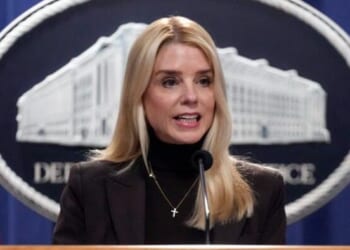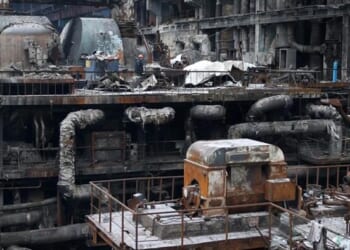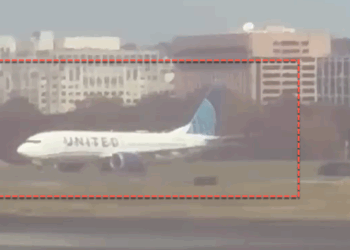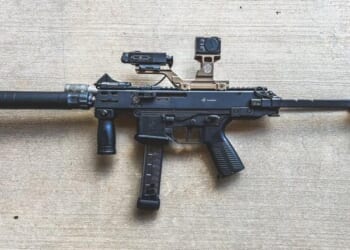The USS Gerald R. Ford aircraft carrier strike group has finally arrived in the US Southern Command Area of Responsibility, after late last month President Trump ordered it to Caribbean waters from its deployment in the Mediterranean.
This represents a drastically-stepped up campaign with an eye on Venezuela, at a moment Washington is mulling possible regime change targeting President Nicolás Maduro, with US officials describing the Ford carrier’s purpose as to bolster the Navy’s capacity to detect, monitor, and disrupt illicit actors and activities.
It also comes after weeks of drones strikes taking out alleged drug smuggling boats – and the tally now stands at nineteen vessels destroyed and over 70 killed.
The Ford and its current three accompanying warships sailed through the Strait of Gibraltar on Nov. 4. “Ship spotters detected Ford escort, USS Bainbridge (DDG-96) off the coast of Puerto Rico early Tuesday. Bainbridge sailed with Ford through Gibraltar,” naval publications note Tuesday. Additionally, Navy.mil announces Tuesday:
The maritime forces’ arrival comes after Secretary of War Pete Hegseth directed the Carrier Strike Group to support the President’s directive to dismantle Transnational Criminal Organizations and counter narco-terrorism in defense of the Homeland.
Previously, the Washington-based Center for Strategic & International Studies laid out why an entire carrier group in Caribbean waters represents a “use it or lose it” scenario which is ultra-costly, also in terms of removing it from other parts of the world:
Moving such a major element of U.S. combat power is highly significant because of the strategic trade-off it represents. The Navy has only 11 aircraft carriers. In general, only three are at sea at any one time because of the need for maintenance and training. All the regional commanders want them. U.S. Indo-Pacific Command always wants one—as a supplement to the carrier permanently stationed in Japan to counter the Chinese navy and conduct exercises with regional allies and partners.
Central Command wants one for the Indian Ocean for use against Iran and the Houthis or in the Eastern Mediterranean to provide air defense for Israel. European Command wants one for operations around Europe to deter Russia. By contrast, the Caribbean has been a low-visibility region for decades, with carriers rarely visiting.
Of course, all of this represents something likely much more than just a renewed ‘war on drugs’ – after Trump already said that potential land strikes against cartels in Venezuela are on the table.
The CSIS report also hinted that the scope is likely far beyond blasting a few drug boats out of the water:
Carriers are immensely powerful because of their air wing. Their striking power comes primarily from the fighter/attack aircraft, typically 24 F/A-18E/Fs and 24 F-35Cs. However, these aircraft are not well suited for counterdrug search because they move too fast. In addition to the fighters, carriers have support aircraft like E-2Ds for aerial surveillance (four, typically) and SH-60R/S helicopters (19) for antisubmarine warfare. The helicopters could help with search and can fire antiship missiles, like Penguins, which are designed to attack fast boats.
There’s also the immense numbers of missiles which can now be trained on Venezuela, as CSIS further documents: “With the addition of these three ships, U.S. naval forces in the region will have over 700 Vertical Launch System (VLS) cells.”
The report continues: “Those launchers carry a variety of missiles, including Tomahawk missiles for land attack, SM-2/SM-6 missiles for air defense, and SM-3 for ballistic missile defense. With an average loadout across the force of 25 percent land attack missiles, roughly 180 Tomahawks would be available for strikes against the Maduro regime or cartel facilities.”
With this level of Pentagon assets parked in one SOUTHCOM region, which is unprecedented in recent history, the “clock is ticking” – as The Economist has highlighted.
Loading recommendations…



















